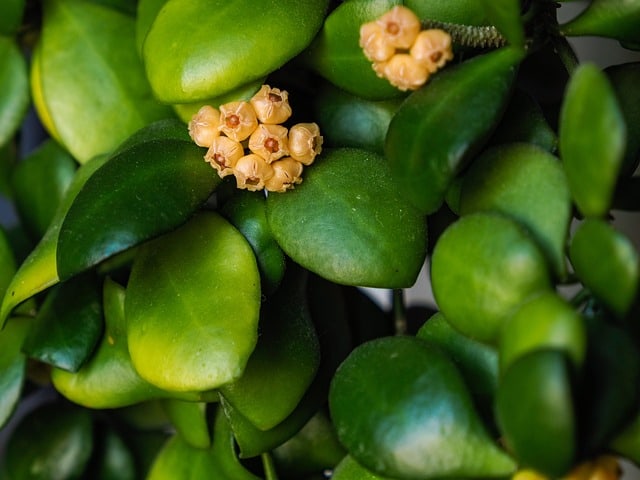Hoya plants are popular houseplants known for their beautiful foliage and fragrant flowers. However, brown spots on hoya leaves can be a cause of concern for plant owners. Brown spots on hoya leaves can be a sign of various underlying issues, including watering problems, pests and diseases, and nutrient deficiency.
Understanding the causes of brown spots on hoya leaves is essential for effective treatment and prevention. Overwatering and underwatering are common reasons for brown spots on hoya leaves.
Other factors such as temperature, light, and pests can also contribute to the development of brown spots on hoya leaves. In this article, we will explore the various causes of brown spots on hoya leaves and provide tips on how to prevent and treat them.
Key Takeaways
- Brown spots on hoya leaves can be a sign of underlying issues such as watering problems, pests, and nutrient deficiency.
- Understanding the causes of brown spots on hoya leaves is essential for effective treatment and prevention.
- Proper watering, pest control, and nutrient management are key to preventing and treating brown spots on hoya leaves.
Also see:
Understanding Hoya Plant
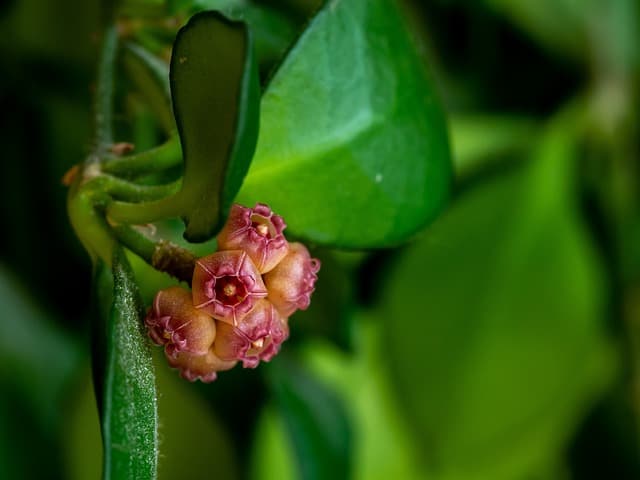
Hoya, also known as Wax Plant, is a popular tropical plant that is widely grown for its star-shaped flowers and low maintenance requirements. The Hoya plant belongs to the Apocynaceae family and is native to Southeast Asia, Australia, and the Pacific Islands.
The Hoya plant is a perennial vine that can grow up to 6 feet long. It has thick, waxy leaves that are usually dark green in color and can vary in shape and size depending on the species. The Hoya plant is known for its beautiful flowers that bloom in clusters and come in a range of colors, including pink, white, red, and yellow.
The Hoya plant is a relatively low maintenance plant that can thrive in a variety of growing conditions. It prefers bright, indirect light and well-draining soil. The Hoya plant is also known for its ability to tolerate drought and can go for long periods without water.
One of the most important things to keep in mind when growing a Hoya plant is to avoid overwatering. Overwatering can cause root rot, which can lead to brown spots on the leaves and other problems. It is also important to avoid exposing the Hoya plant to extreme temperatures, as this can also cause brown spots and other issues.
Overall, the Hoya plant is a beautiful and easy-to-care-for tropical plant that is perfect for both beginner and experienced gardeners. With the right growing conditions and a little bit of care, the Hoya plant can thrive and produce beautiful star-shaped flowers for years to come.
Brown Spots on Hoya Leaves – 5 Common Problems
Hoya plants are known for their beautiful and unique foliage. However, they are prone to several issues that can affect the health and appearance of their leaves. Here are some common issues with Hoya leaves:
1. Brown Spots
One of the most common issues with Hoya leaves is the appearance of brown spots. Brown spots can be caused by various factors such as diseases, pests, or environmental stress. If left untreated, brown spots can spread and cause the leaves to wither and die.
To prevent brown spots, it is important to maintain proper watering and avoid overwatering. Additionally, make sure to keep the plant in a well-ventilated area with adequate sunlight. If brown spots have already appeared, it is recommended to remove the affected leaves and treat the plant with a fungicide.
2. Yellow Spots
Yellow spots on Hoya leaves can be a sign of nutrient deficiency or overwatering. In some cases, yellow spots can also be caused by pests or diseases. To prevent yellow spots, make sure to provide the plant with proper nutrients and avoid overwatering.
If yellow spots have already appeared, consider adjusting the watering schedule or treating the plant with an insecticide or fungicide.
3. White Spots
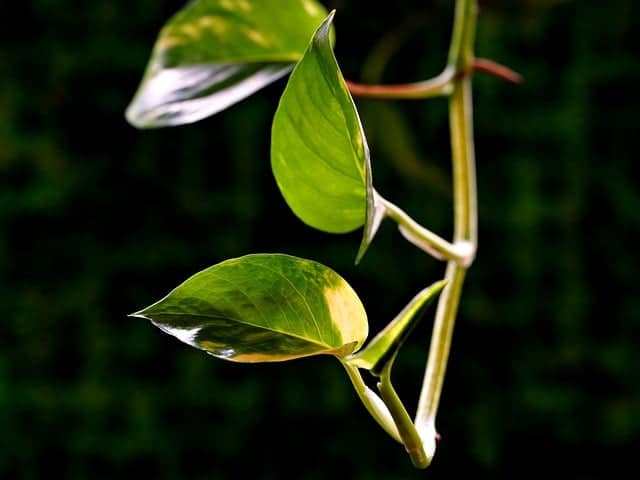
White spots on Hoya leaves are often caused by hard water or mineral buildup. This can be prevented by using filtered or distilled water and wiping the leaves with a damp cloth regularly. If white spots have already appeared, consider using a water-soluble fertilizer or repotting the plant in fresh soil.
4. Wilting Leaves
Wilting leaves on Hoya plants can be a sign of underwatering or overwatering. To prevent wilting, make sure to water the plant regularly and avoid letting the soil dry out completely. If wilting has already occurred, adjust the watering schedule accordingly and consider repotting the plant in fresh soil.
5. Waxy Leaves
Hoya leaves are naturally waxy, but excessive wax buildup can be a sign of overfertilization or pests. To prevent waxy buildup, avoid overfertilizing and regularly wipe the leaves with a damp cloth. If waxy buildup has already occurred, consider reducing the frequency of fertilization or treating the plant with an insecticide.
Watering Problems and Their Effects
Hoyas require consistent and proper watering to thrive. Watering problems can lead to various issues, including brown spots on the leaves. Here are some common watering problems and their effects on Hoya plants:
1. Overwatering
Overwatering is one of the most common watering problems that can cause brown spots on Hoya leaves. When a Hoya plant is overwatered, its roots can become waterlogged, leading to root rot.
The roots are unable to absorb oxygen, and the plant can’t take up nutrients. Overwatering can also lead to fungal infections and attract pests.
2. Underwatering
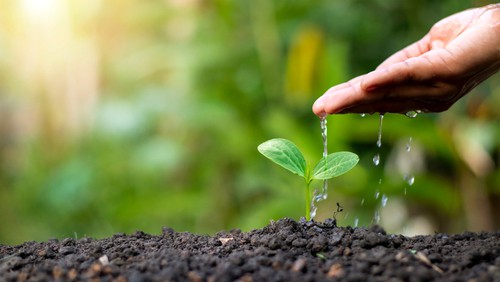
Underwatering is another common watering problem that can cause brown spots on Hoya leaves. When a Hoya plant is underwatered, it can’t take up enough water to support its growth.
The leaves may wilt, curl, or turn brown. Underwatering can also lead to water stress, where the plant is unable to take up enough water to support its metabolic processes.
3. Hard Water
Hard water can also cause brown spots on Hoya leaves. Hard water contains high levels of minerals, such as calcium and magnesium, which can build up in the soil and cause nutrient imbalances. This can lead to brown spots on the leaves and stunted growth.
4. Tap Water
Tap water can contain chlorine, fluoride, and other chemicals that can harm Hoya plants. These chemicals can cause brown spots on the leaves and other issues. It’s best to use filtered or distilled water when watering Hoyas.
5. Distilled Water
Distilled water is free of minerals and chemicals, making it an ideal choice for watering Hoyas. However, it’s important to note that distilled water lacks the minerals that plants need to grow. It’s best to use a balanced fertilizer to supplement the nutrients that distilled water lacks.
6. Rainwater
Rainwater is an excellent choice for watering Hoyas. It’s free of chemicals and contains the minerals that plants need to grow. However, it’s important to collect rainwater in a clean container to avoid contamination.
Role of Temperature and Light
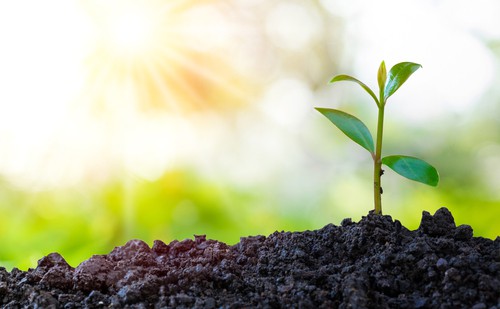
Temperature and light play a crucial role in the growth and development of Hoya plants. The ideal temperature range for Hoya plants is between 60°F to 85°F (15.5°C to 29.4°C).
If the temperature falls below this range, it can cause frost damage to the leaves and stems. On the other hand, if the temperature rises above this range, it can lead to sunburn and brown spots on the leaves.
Direct sunlight can also be harmful to Hoya plants. While they do require bright light, direct sunlight can cause sunburn and brown spots on the leaves. It is important to provide them with indirect or filtered light. During the summer months, it is recommended to move the plant to a location with less direct sunlight.
Light levels also play a crucial role in the growth and development of Hoya plants. Insufficient light can cause the leaves to turn yellow and drop off, while too much light can cause sunburn and brown spots on the leaves. It is important to provide them with the right amount of light.
Pests and Diseases Affecting Hoya Leaves
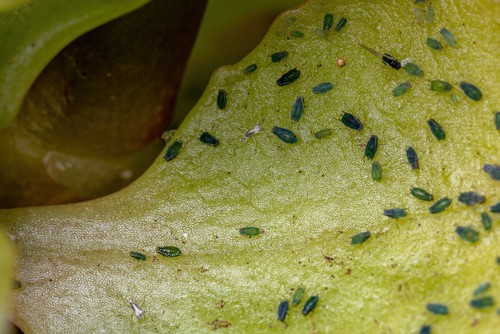
Hoya plants are prone to various pests and diseases that can cause brown spots on their leaves. Insects such as ants, aphids, and mealybugs can infest the plant and cause damage to the leaves. These pests feed on the sap of the plant, leaving behind a sticky residue called honeydew, which can attract fungi and other pests.
Fungal diseases such as leaf spot, root rot, anthracnose, and septoria can also cause brown spots on Hoya leaves. Leaf spot is caused by bacteria or fungi and can be identified by circular or irregular brown spots on the leaves.
Root rot is caused by overwatering and can cause the plant to wilt and the leaves to turn brown. Anthracnose is a fungal disease that causes brown spots on the leaves and can lead to the death of the plant.
To prevent and treat fungal diseases, it is important to maintain good plant hygiene by removing any dead or infected leaves and keeping the plant well-ventilated. Fungicides can also be used to treat fungal diseases, but it is important to follow the instructions carefully and use them sparingly.
In addition to pests and diseases, environmental factors such as high humidity, low light, and overwatering can also cause brown spots on Hoya leaves.
Edema, a condition caused by overwatering, can cause the leaves to develop small, raised bumps that eventually turn brown. Botrytis and colletotrichum are fungal diseases that can be caused by high humidity and can lead to brown spots on the leaves.
To prevent and treat environmental factors, it is important to provide the plant with adequate light, water, and ventilation. Organic pesticides such as isopropyl alcohol and vinegar can also be used to treat insect infestations, but it is important to use them sparingly and follow the instructions carefully.
Nutrient Deficiency and Overuse
Hoya plants require specific nutrients to grow healthily. Overuse or deficiency of these nutrients can cause brown spots on the leaves.
1. Nutrient Deficiency
Lack of essential nutrients such as nitrogen, phosphorus, and potassium can cause brown spots on Hoya leaves. Nitrogen deficiency can cause yellowing of the leaves, while a lack of phosphorus can cause brown spots. Potassium deficiency can result in yellowing and brown spots on the edges of the leaves.
2. Overuse of Fertilizer
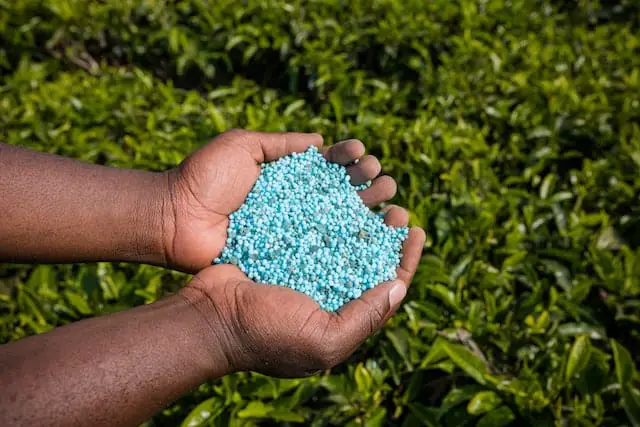
Overuse of fertilizer can also cause brown spots on Hoya leaves. Fertilizers contain mineral salts that can accumulate in the soil and cause chemical burns on the leaves. It is essential to follow the instructions on the fertilizer package and avoid overuse.
3. Mineral Deposits
Mineral deposits in the soil can cause brown spots on Hoya leaves. These deposits can accumulate in the soil over time, leading to the buildup of mineral salts. To avoid this, it is recommended to use distilled water or rainwater for watering the plants.
Preventive Measures and Treatment
Preventive measures for brown spots on Hoya leaves include proper watering, good air circulation, and regular pruning. Overwatering or underwatering can cause brown spots, so it is important to water the plant properly.
One way to check if the plant needs water is to stick a finger in the soil. If it feels dry, it’s time to water. If it feels moist, wait a few more days.
Good air circulation is also important to prevent fungal and bacterial leaf spots. Hoya plants prefer a well-ventilated area with moderate humidity. If the air is too humid, it can create the perfect environment for fungal and bacterial infections to thrive. A fan can help circulate the air and prevent these problems.
Regular pruning can also help prevent brown spots on Hoya leaves. Pruning encourages new growth and helps to keep the plant healthy. It also allows more light to reach the lower leaves, which can prevent fungal and bacterial infections.
If brown spots do appear on Hoya leaves, there are several treatment options available. Insecticidal soap can be used to treat insect infestations, which can cause brown spots. Non-toxic options like hydrogen peroxide or lemon juice can also be used to treat fungal infections.
If the problem is caused by bacterial leaf spots, it is important to remove the affected leaves and stems and sanitize any tools used to prune the plant. Applying a fungicide can also help to prevent the spread of the infection.
Repotting the plant with fresh, organic compost can also help to prevent brown spots caused by nutrient deficiencies. Spacing the plants properly and using mulch can also help to prevent frost damage and other environmental stressors that can cause brown spots on Hoya leaves.
Overall, preventing brown spots on Hoya leaves requires proper care and attention. By ensuring that the plant is watered properly, has good air circulation, and is pruned regularly, it can stay healthy and free of brown spots.
Physiological Disorders in Hoya
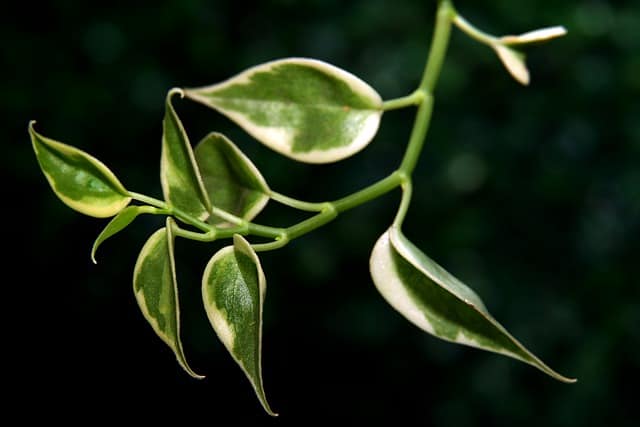
Hoya plants can suffer from various physiological disorders that can cause brown spots on their leaves. One of the common physiological disorders is oedema. Oedema is a condition where the plant takes up more water than it can release through transpiration, leading to the swelling of the plant cells.
As a result, the plant develops tiny, clear blisters or bumps on the leaves that eventually turn brown.
Another physiological disorder that can cause brown spots on Hoya leaves is sunburn. When the Hoya plant is exposed to direct sunlight for an extended period, the leaves can develop brown spots due to the damage caused by the UV rays.
The brown spots can also appear on the leaves’ edges, which are the most exposed parts of the plant.
Furthermore, Hoya plants can also develop brown spots due to nutrient deficiencies. When the plant lacks essential nutrients, it can develop brown spots on its leaves. For instance, a magnesium deficiency can cause brown spots to appear on the Hoya leaves.
In addition, Hoya plants can develop brown spots due to environmental stress. For instance, if the plant is exposed to extreme temperatures, it can develop brown spots on its leaves. Similarly, if the plant is exposed to high humidity levels, it can develop fungal or bacterial infections that can cause brown spots on its leaves.
Understanding Hoya’s Growth Pattern
Hoyas are tropical plants that are known for their beautiful, waxy flowers and their ability to thrive in indoor environments. Understanding their growth pattern is essential to keep them healthy and free from brown spots on their leaves.
1. Growth Habits
Hoyas are slow-growing plants that can take years to reach their full size. They are climbers that can grow up to 10 feet long, and they produce leaves that are thick, waxy, and oval-shaped. The leaves can vary in size depending on the species, and they are often variegated with shades of green, yellow, and white.
2. Environmental Requirements
Hoyas are sensitive to changes in their environment, and they require specific conditions to grow and thrive. They prefer bright, indirect light and temperatures between 60 and 80 degrees Fahrenheit. They also require high humidity levels, which can be achieved by misting the leaves or placing a humidifier near the plant.
3. Watering and Fertilizing

Hoyas have specific watering requirements, and overwatering or underwatering can cause brown spots on their leaves. They prefer to be watered when the soil is dry to the touch, and they should be fertilized every two to three months during the growing season. Hoyas also benefit from being repotted every two to three years to ensure healthy growth.
4. Common Pests and Diseases
Hoyas are susceptible to pests and diseases that can cause brown spots on their leaves. Common pests include spider mites, mealybugs, and scale insects, which can be controlled with insecticidal soap or neem oil.
Fungal and bacterial infections can also cause brown spots, which can be prevented by ensuring proper drainage and avoiding overwatering.
Frequently Asked Questions
What causes brown spots on Hoya leaves?
Brown spots on Hoya leaves can be caused by a variety of factors, including watering problems, fungal infections, insect infestations, and environmental stress.
Overwatering or underwatering can cause brown spots on Hoya leaves, as can exposure to extreme temperatures or low humidity levels.
Are brown spots on Hoya leaves a sign of disease?
Brown spots on Hoya leaves can be a sign of disease, particularly if they are accompanied by other symptoms such as yellowing or wilting.
Fungal infections such as leaf spot and powdery mildew can cause brown spots on Hoya leaves, as can bacterial infections. Insect infestations such as spider mites and mealybugs can also cause brown spots on Hoya leaves.
How can I prevent brown spots from forming on my Hoya leaves?
To prevent brown spots from forming on your Hoya leaves, it is important to provide your plant with the proper care. This includes watering your plant correctly, providing it with adequate light and humidity, and avoiding exposure to extreme temperatures.
You should also inspect your plant regularly for signs of insect infestations or fungal infections, and take steps to address any issues as soon as they arise.
What is the best treatment for brown spots on Hoya leaves?
The best treatment for brown spots on Hoya leaves depends on the underlying cause of the problem. If the brown spots are caused by overwatering, you may need to adjust your watering habits and allow the soil to dry out more between waterings.
If the brown spots are caused by a fungal infection, you may need to apply a fungicide to the affected leaves. In some cases, it may be necessary to prune away severely damaged leaves.
Can overwatering cause brown spots on Hoya leaves?
Yes, overwatering can cause brown spots on Hoya leaves. When a Hoya plant is overwatered, the roots can become waterlogged and unable to absorb oxygen, which can lead to root rot and other problems.
Overwatering can also cause the plant to develop fungal infections, which can manifest as brown spots on the leaves.
Are there any natural remedies for brown spots on Hoya leaves?
There are several natural remedies that can be used to treat brown spots on Hoya leaves, including neem oil, baking soda, and hydrogen peroxide. Neem oil is a natural insecticide and fungicide that can help to control insect infestations and fungal infections.
Baking soda can be used to create a homemade fungicide that can be applied to the affected leaves, while hydrogen peroxide can be used to disinfect the plant and prevent the spread of infection.

Hey, I’m Lisa and I’ve been an avid gardener for over 30 years. I love writing, talking and living in the garden! Feel free to connect with me on my socials below

